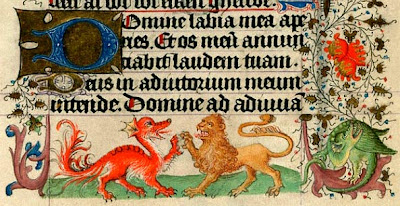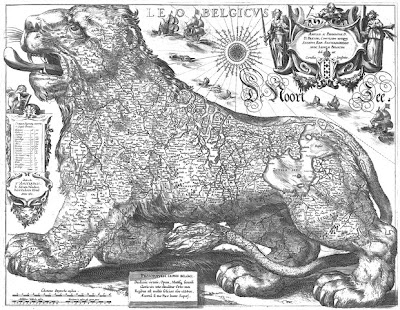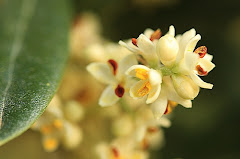Giulio Clovio (Croatia, 1498–1578) studied with Giulio Romano and was the author of The Farnese Hours, an illuminated manuscript commissioned by Cardinal Alessandro Farnese, and completed in 1546. It contains religious stories (both Biblical and apocryphal), illustrations with architectural borders and classical nudes, exquisite miniature landscapes, and candelabrum arrangements in the grotesque style. Clovio painted twenty-six lavishly-detailed full-page miniatures, and illuminated a few dozen more pages with elaborate border-decorations. Clovio was greatly esteemed by his contemporaries. the Farnese Hours, the last great Italian Renaissance manuscript, was highly praised in Vasari's The Lives of Painters (Vite, 1568). Of Clovio, Vasari said that there "has never been ... a more rare painter of little things," while calling him a "piccolo e nuovo Michelangelo." Vasari described the Farnese Hours at length, claiming that the work seemed to him a divine rather than a human production: "ella pare cosa divina e non umana" (Giorgio Vasari, Le Vite de' più eccellenti pittori, scultori e architettori, scritte e di nuovo ampliate da Giorgio Vasari con i ritratti loro e con l'aggiunta delle vite de' vivi e de' morti dall'anno 1550 infino al 1567, 3 vols., Florence: Giunti, 1568; Livre d'heures du cardinal Farnèse; Giornale Nuovo).
There are 65 pages with images from this manuscript (M.69), see the Online Research Resource of the Pierpont Morgan Library.
Worth of mention are also two other works illuminated by Clovio: the Colonna Missal and the Triumphs of Emperor Charles V.
The Colonna Missal dates to c. 1512-32 and was made for Cardinal Pompeo Colonna. There had been some debate about the identity of the artist. Some had attributed the missal to Raphael and it has also been suggested that the work may belong to Vinzenzio Raimondi. However, the work is now generally attributed to Clovio.
The British Library has Clovio's twelve miniatures of The Triumphs of Charles V, in a volume also including 13 cartouches in colors and gold, of masks, shells, gemstones, grotesques, architectonic decoration and all'antica elements (British Library full record for Add Ms 33733). Commissioned by Philip II of Spain to Clovio, known to his contemporaries as the Michelangelo of illuminated manuscripts, the work is on parchment (29 × 20 cm) and is entitled "Triunfos de Carlos V." Charles V is commonly considered a great ruler, if for no other reason than that he could state that in his realm the sun never set. Charles' victories are the subject of the above-mentioned series of luxurious miniatures, where his mighty deeds are exalted as political and military triumphs.
 |
| Clovio, The Farnese Hours, Rome, 1537-46 illuminated manuscript New York, Pierpont Morgan Library & Museum, Ms. M69 |
 |
| Landscape from fol. 66v |
fols. 9v-10r
Margins decorated each with border including winged putto leaning on draped back of lion standing on base decorated with mythological hybrid(s); two swans each holding end of garland; lozenge enclosing standing nude (human figure holding spear and shield); two winged heads; nude female figure with two pairs of wings, holding garland of drapery with both hands, flanked by two vases; head wearing headdress.
Margins decorated each with border including winged putto leaning on draped back of lion standing on base decorated with mythological hybrid(s); two swans each holding end of garland; lozenge enclosing standing nude (human figure holding spear and shield); two winged heads; nude female figure with two pairs of wings, holding garland of drapery with both hands, flanked by two vases; head wearing headdress.
 |
| Landscape from fol. 105r |
fols. 66v-67r
Margins decorated with border of floreate ornament; various motifs (two burning lamps, cameo of man wearing headgear, winged heads [masks]; foliate candelabrum motif with two addorsed winged horses with serpent-like hindquarters); two suspended baskets with foliage and drapery; landscape with ruined buildings; two satyrs or men as caryatids; domed pavilion supported by four columns enclosing statue; pearls; vase on pedestal decorated with three ram's heads; two winged putti, grasping handle of vase.
Margins decorated with border of floreate ornament; various motifs (two burning lamps, cameo of man wearing headgear, winged heads [masks]; foliate candelabrum motif with two addorsed winged horses with serpent-like hindquarters); two suspended baskets with foliage and drapery; landscape with ruined buildings; two satyrs or men as caryatids; domed pavilion supported by four columns enclosing statue; pearls; vase on pedestal decorated with three ram's heads; two winged putti, grasping handle of vase.
 |
| Landscape from fol. 91r |
fols. 104v-105r
Marginal border decorations: panels each enclosing winged head (mask); two nude male hybrid figures terminating in ornament; standing man, right hand extended holding object, left hand grasping mantle; two winged putti atop temple, decorated with garland, in center, altar on which stands statue flanked by two candles, lamp hanging at left and at right, winged head at lower edge of the building; nude winged woman, wearing diaphanous garment, blowing two horns standing on globe flanked by two lions, all on base supported by two winged putti.
Marginal border decorations: panels each enclosing winged head (mask); two nude male hybrid figures terminating in ornament; standing man, right hand extended holding object, left hand grasping mantle; two winged putti atop temple, decorated with garland, in center, altar on which stands statue flanked by two candles, lamp hanging at left and at right, winged head at lower edge of the building; nude winged woman, wearing diaphanous garment, blowing two horns standing on globe flanked by two lions, all on base supported by two winged putti.
There are 65 pages with images from this manuscript (M.69), see the Online Research Resource of the Pierpont Morgan Library.
Worth of mention are also two other works illuminated by Clovio: the Colonna Missal and the Triumphs of Emperor Charles V.
The Colonna Missal dates to c. 1512-32 and was made for Cardinal Pompeo Colonna. There had been some debate about the identity of the artist. Some had attributed the missal to Raphael and it has also been suggested that the work may belong to Vinzenzio Raimondi. However, the work is now generally attributed to Clovio.
 |
| Gospel of John. Opening page. Colonna Missal, 1532 John Rylands University Library, Manchester |
 |
| Detail with John the Evangelist, Hercules and Antaeus, and Diana of Ephesus emerging from two cornucopiae. |
The British Library has Clovio's twelve miniatures of The Triumphs of Charles V, in a volume also including 13 cartouches in colors and gold, of masks, shells, gemstones, grotesques, architectonic decoration and all'antica elements (British Library full record for Add Ms 33733). Commissioned by Philip II of Spain to Clovio, known to his contemporaries as the Michelangelo of illuminated manuscripts, the work is on parchment (29 × 20 cm) and is entitled "Triunfos de Carlos V." Charles V is commonly considered a great ruler, if for no other reason than that he could state that in his realm the sun never set. Charles' victories are the subject of the above-mentioned series of luxurious miniatures, where his mighty deeds are exalted as political and military triumphs.
 |
| Triunfos de Carlos V, Italy, 1555-56 cartouche fol. 4v - L'Aguila |
 |
| cartouche fol. 9v - Los Indios |
 |
| cartouche fol. 15v - Vencido |
 |
| det. cartouche, fol. 5v - the face in the crown |
 |
| det. cartouche fol. 13v - a Michelangelo-inspired grotesque |
Cartouche components
6v masks, shells, gemstones, grotesques, architectonic decoration and all'antica elements
7v floral motifs and architectonic decoration
8v gemstones, flowers and architectonic decoration
9v gemstones, grotesques and architectonic decoration
10v shells and architectonic decoration
11v floral motifs and architectonic decoration
12v architectonic decoration
13v masks, shells, gemstones, grotesques, architectonic decoration and all'antica elements
15v masks, shells, gemstones, grotesques, architectonic decoration and all'antica elements
16v masks, shells, gemstones, grotesques, architectonic decoration and all'antica elements
17v architectonic decoration
Miniatures
fol. 10 A miniature of a scene from the Triumphs of Emperor Charles V: the Spanish expedition to America, 1530
fol. 13 The submission of Egmont or Egmont submitting to Charles V, 1546







































